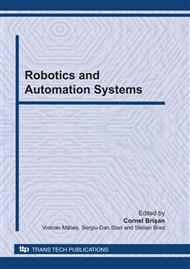p.83
p.89
p.95
p.101
p.109
p.115
p.121
p.127
p.133
Actuation Strategy for a New Driving Simulator Setup
Abstract:
This paper focuses on the actuation strategy of an active driving simulator and its validation using experimental driving data. The simulator combines the simulation of both the road characteristics and the vehicle dynamics into a single architecture. The goal is to combine actual road excitation signals with imposed vehicle movements to create a realistic driving experience.
Info:
Periodical:
Pages:
109-114
Citation:
Online since:
September 2010
Authors:
Keywords:
Price:
Сopyright:
© 2010 Trans Tech Publications Ltd. All Rights Reserved
Share:
Citation:


